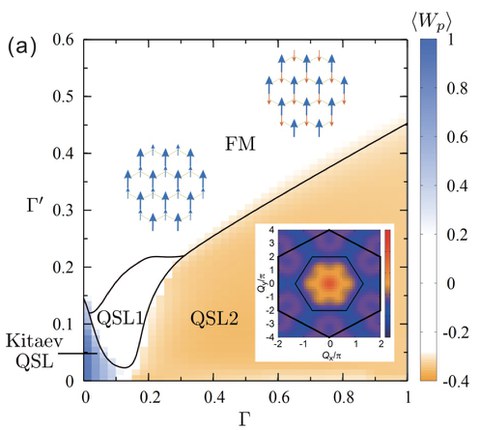Oct 25, 2023
New structural platform for quantum spin liquids

Phase diagram for high-symmetry phase of α-RuCl3
In a collaboration between the Leibniz Institute for Solid State and Materials Research (IFW), the Max Planck Institute for Solid State Research in Stuttgart (MPI Stuttgart), and Technische Universität Dresden (TUD), a theoretical study has identified a novel platform for Quantum Spin Liquids (QSLs). The research focused on the magnetic couplings in a new high-symmetry structure of the material α-RuCl3 under pressure, which has recently been discovered at IFMP.
This structure is distinguished by its unusually high symmetry, featuring a single type of Ru-Ru link and uniform Ru-Cl-Ru bond angles of ≈93◦. Quantum chemical calculations conducted by the collaborative team at the IFW and MPI revealed a remarkably small nearest-neighbor Heisenberg J, resulting in the highest Kitaev-to-Heisenberg exchange ratio ever reported of about ∼100. Notably, this discovery is linked to vanishingly small d-shell trigonal splittings, indicating minimal deviation from ideal jeff=1/2 moments.
The findings reconfirm α-RuCl3 as an exceptionally promising platform for realizing QSLs and demonstrate hydrostic pressure can be used to stabilize new magnetic states of condensed matter.
Original publication:
Maximized K/J ratio and cubiclike jeff=1/2 moments in a noncubic environment in α−RuCl3 under pressure, Pritam Bhattacharyya, Liviu Hozoi, Satoshi Nishimoto, Quirin Stahl, Jochen Geck, and Nikolay A. Bogdanov, Phys. Rev. B 108, L161107 (2023)
